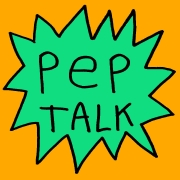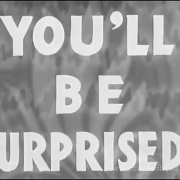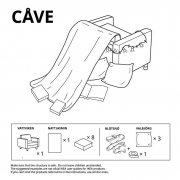RSW Agency New Business Case Study Series, Pt. 5: If You Don’t Have Results for Your Case Study, It’s Time for a Pep Talk
Welcome to the 5th and final post in our series on crafting a better new business case study. We’ve covered many of the fundamentals over the past few weeks but in the following post we’ll be addressing a problem that is surprisingly common for agencies embarking on their new business journey. How do you write a convincing case study if you don’t have ROI metrics, results, to show?
Download A Guide To Help Agencies Drive New Business Through Better Case Studies here.
Salespeople are suckers for a nice, juicy success metric.
Hand them a case study showing X% increased conversions, double-digit improvement in engagement, or a significant decrease in costs and they’ll thank you for days.
Bring them a case study showing a big fat zero as far as results and your reception will be chilly indeed.
And for good reason.
A concrete number in a large font, smack dab in the middle of your case study has a way of cutting through the noise and declaring to the world “Here I am! Look upon me and marvel!”
A solid metric can be an essential framing device – it’s the first thing the prospect will look for, a focal point to keep your narrative grounded, and a parting shot that is easy to remember.
It makes the job of acquiring new business just a little bit easier. Oh boy, success metrics are the best!
But what if you “don’t have any results” to include in a case study?
Unfortunately, then I guess it’s time to pack in, dear agency new business friend.
A case study without results? Prospects will sooner dump a bucket of cold water over your head than give you the time of day.
It’s the end of the line.
Come back here! Take a knee.
Let’s huddle for a second, because it’s time for a pep talk.
Listen, we get it, it’s hard out there.
As an agency partner, you don’t always have control over reporting the results of the work you do for your clients.
It could be you signed an NDA and can’t boast about the numbers on the national ad campaign you helmed.
Maybe your team handled one portion of a larger campaign and you never even had access to metrics.
Or perhaps it’s impossible to attribute relevant numbers to the type of work that your agency does.
Let’s say that any one of these statements is true, which means you don’t have ROI figures to include in your case study.
So what?
Certainly, there was a positive conclusion to your work.
Otherwise, you wouldn’t be writing a case study around it.
It’s true that you will have to sweat a little more to shape your case study’s story but the results are there. You’re going to be ok, trust us.
Depending on your type of agency and the nature of the work, there are several approaches to consider if you “don’t have results” for your case study.

Contrast the Before and After
By and large, humans are self-centered creatures.
Tell a story the next time you’re at a party.
That bright light in people’s eyes isn’t them listening intently.
It’s the gears in their heads whirring away as they think about the ways your story relates to their own experiences.
Something every case study should accomplish is to get the reader to see themselves in its story.
While big numbers certainly help shape the story, they don’t create connection.
If you don’t have concrete results, think about tossing the Problem, Solution and Results paradigm out the window entirely.
You might be better served by structuring your case study in terms of Before and After.
Share your client’s journey on the path to success and your role as expert/mentor/guide.
- What was your client’s situation before you arrived on the scene? You’re not filming an infomercial, so you don’t need to paint the client as hapless, but do what you can to highlight their need. Was their market share being threatened by an upstart brand? Was their social media presence slow to respond to current events and consumer posts? Did their website need to be overhauled to improve CX?
- How did your approach change your client? Key to any narrative arc is that the main character either finds a new path or makes a deep self-discovery. What was the client’s experience throughout the decision-making process? Describe the ways in which they grew or changed as your agency’s unique approach unfolded.
- How was the client’s situation different at the end of the journey? That a client was better off after working with you is the bar you have to meet to make a case study worthwhile. Even if you can’t showcase hard results, you may be able to hint at metrics such as increased engagement, higher sales, or an enhanced brand presence. However, when possible try to go beyond the short-term. How did your relationship with the client change their business and set them up for even more success down the road?
Highlight Your Long-Standing Relationship with the Client
We’ve all heard the ubiquitous human interest story: Couple celebrates 50th anniversary; and we all have the same thought, “Wow! How’d they make it work for so long?”
The reason we think that is simple.
Maintaining a long-lasting relationship is hard work.
There are diverging opinions. Personality differences.
Plain ol’ boredom. A million different burrs, big or small, can create friction that will test even the most steadfast contract.
As it is in marriage so it is in the agency-client relationship.
Let’s face it, there are numerous agencies vying for any given client’s attention at any given time.
Listing the number of projects you’ve done for the client beyond the one covered in your case study points to something that shouldn’t be discounted in this day and age: reliability.
Showing that your performance on a project has merited your continued status as a go-to problem solver will serve you well.
Include Testimonials
The ultimate purpose of creating a case study and showcasing ROI metrics is to prove value.
You want a prospect to trust that you are worth their time and eventual investment.
The most reliable path to establishing credibility is to provide social proof such as testimonials.
In this blog series, we’ve mentioned several times how powerful it can be if you succeed in getting a prospect to relate to the challenges facing the subject of your case study.
There really is no more surefire way to do this than to include testimonials, which help you tell your client’s story in their own words.
Testimonials will lend weight to your cause that might be lacking if you can’t include a big metric. It’s one thing for you to proclaim your greatness and entirely another for a 3rd party to do it for you.
Using testimonials will of course require that you interview one or several of your clients.
If you want to make the best use of your client’s time while getting just the right statement from them, you’ll want to plan your questions carefully.
- Create a draft or outline of your case study first. Getting a sense of the arc of the case study will determine the questions you’ll be asking.
- Ask specific questions to get specific answers. Even though it might seem that asking a single open-ended question such as “What was it like to work with us?” will save your client time, it probably won’t get you a very useful answer. You might then be forced to go back to your client with follow-up questions, to use a non-specific response that won’t fit your narrative, or even worse, to scrap the testimonial. Then you really will be wasting your client’s time.
- Be succinct. I’ll admit it… this one is a bit of a cheat because it’s an extension of the second point. Asking specific questions will allow your client to provide short answers that directly address how you helped them solve specific pain points. One or two sentences will do.
Knowing the story you want to tell and planning accordingly makes it possible for you to incorporate testimonials the way that suits your case study best – from including a single powerful pull quote as an accent piece to incorporating multiple quotes to truly let your client sing your praises.
Show Off What Matters Most (but don’t forget the details)
This is may be self-explanatory, but a creative agency is going to have its own set of challenges (and advantages) when crafting case studies.
If hard metrics are not available, very often their work itself (ads, video, package design) is enough of a result to draw in the prospect.
The same could be said for agencies specializing in web design.
For those agencies, winning business should be as easy as unleashing their design team to knock out a few case studies, right?
In fact, shouldn’t marketers be knocking down their doors to throw projects at their feet?
We wish it were that simple.
We often tell agencies that even though great creative can make acquiring new business easier, they can’t expect it to score them a meeting or a win on its own.
To begin with, as good as your creative is, you will need to convince prospects that you understand their particular pain points and industry.
They’ll want to learn more about your process and approach. Finally, they’ll need assurances that you’ll be a reliable partner.
By all means, make your creative the centerpiece of your case studies but don’t forget to place that creative within the context of the relationship you established with your client.
Creating and maintaining that relationship is also a result prospects will care about.
Keep Swinging, Champ
Any salesperson will tell you that leading with killer results is going to allow you to put your best foot forward.
It’s better to have concrete metrics than to not.
But the salespeople really worth their salt won’t hesitate to also add that hard numbers will only get you so far with a prospect.
Success metrics may pique initial interest, but interest can die rather quickly unless it’s stoked and tended to like a fire.
Work with the results you’ve got…or in other words, shake what your mama gave you.
But remember that showing off those results, and even sharing a case study with a prospect at all, is just one step in a long series of steps you’ll have to take.
What matters is your next touchpoint…and the one after that…and the one after that.
The methodical process of nurturing the prospect and developing a relationship with them over time will be the thing that wins you business.













